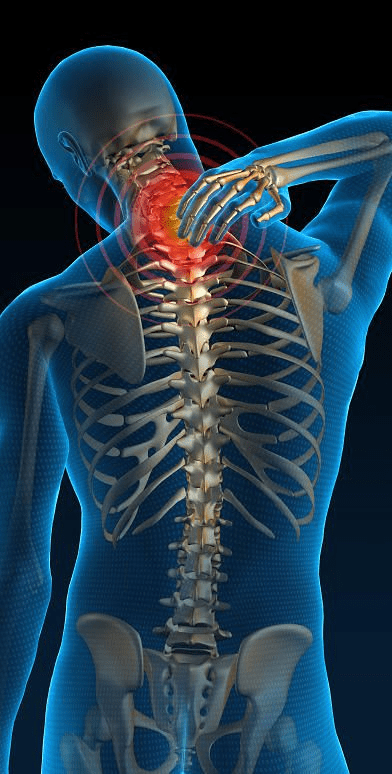Overview :
Muscle spasms, characterized by sudden, involuntary contractions of one or more muscles, can be a source of significant discomfort and disruption to daily activities. In this comprehensive guide, we explore the best treatment options for muscle spasms, focusing on evidence-based strategies for relief.
soma pill (Pain O Soma) tablet is a muscle relaxers. It is used to treat people with painful muscle spasms,(which are rapid, uncontrollable movements of a muscle) and other painful joint conditions, such as stiffness or tightness. Pain that can’t be treated with normal drugs, like pain from a serious injury or accident or pain after surgery, can be relaxed with medicines like Pain O Soma 500.

Understanding Muscle Spasms
Before delving into treatment options, it’s essential to understand the underlying causes of muscle spasms. These involuntary contractions can occur due to various factors, including muscle fatigue, dehydration, electrolyte imbalances, nerve compression, or underlying medical conditions such as muscle strains or neurological disorders.
Over-the-Counter Medications
1. Nonsteroidal Anti-Inflammatory Drugs (NSAIDs): NSAIDs such as ibuprofen or naproxen can help relieve pain and inflammation associated with muscle spasms. These medications work by inhibiting the production of prostaglandins, substances that contribute to pain and inflammation.
2. Muscle Relaxants: Prescription muscle relaxants such as cyclobenzaprine or methocarbamol may be recommended for severe muscle spasms that do not respond to over-the-counter medications. These medications work by targeting the central nervous system to induce muscle relaxation.
Home Remedies
1. Heat Therapy: Applying heat to the affected area can help relax tense muscles and improve blood flow, promoting faster recovery from muscle spasms. Heating pads, warm baths, or hot packs can be effective forms of heat therapy.
2. Stretching and Massage: Gentle stretching exercises and massage techniques can help alleviate muscle spasms by releasing tension and improving flexibility. Targeted stretching of the affected muscle groups can help prevent future spasms.
Hydration and Nutrition
1. Hydration: Adequate hydration is essential for maintaining proper muscle function and preventing electrolyte imbalances that can contribute to muscle spasms. Drinking plenty of water throughout the day can help keep muscles hydrated and functioning optimally.
2. Electrolyte Balance: Consuming foods rich in potassium, magnesium, calcium, and sodium can help maintain electrolyte balance and prevent muscle cramps and spasms. Foods such as bananas, leafy greens, nuts, seeds, and dairy products are excellent sources of these essential minerals.
Prescription Medications
1. Antispasmodic Drugs: In cases of severe or persistent muscle spasms, a healthcare provider may prescribe antispasmodic medications such as baclofen or diazepam to help relax the muscles and alleviate symptoms.
2. Botulinum Toxin Injections: In some cases, injections of botulinum toxin (Botox) may be recommended to target specific muscles affected by spasms. Botulinum toxin works by blocking the release of acetylcholine, a neurotransmitter that triggers muscle contractions.
Muscle pain, also known as myalgia, is a common ailment that can affect individuals of all ages and lifestyles. In this comprehensive guide, we will explore the various causes of muscle pain and provide effective strategies for managing and alleviating discomfort.
Causes of Muscle Pain
1. Overexertion: Intense physical activity or overuse of muscles can lead to muscle strain, resulting in pain and discomfort.
2. Injuries: Accidents, falls, or trauma can cause muscle injuries such as sprains, strains, or tears, leading to pain and inflammation.
3. Muscle Tension: Stress, poor posture, or repetitive movements can cause muscle tension and tightness, resulting in pain and stiffness.
4. Medical Conditions: Underlying medical conditions such as fibromyalgia, arthritis, or infections can cause widespread muscle pain and tenderness.
Effective Management Strategies
1. Rest and Relaxation: Adequate rest and relaxation are essential for allowing muscles to heal and recover from overexertion or injury. Avoiding strenuous activities and practicing relaxation techniques such as deep breathing or meditation can help alleviate muscle pain.
2. Heat and Cold Therapy: Applying heat packs or taking warm baths can help relax tense muscles and improve blood circulation, reducing pain and stiffness. Conversely, applying ice packs or cold compresses can help numb the area and reduce inflammation.
3. Stretching and Exercise: Gentle stretching exercises and low-impact activities such as yoga or swimming can help improve flexibility, strengthen muscles, and reduce muscle tension and pain.
4. Massage Therapy: Professional massage therapy can help release tension, improve circulation, and promote relaxation, providing relief from muscle pain and discomfort.
Over-the-Counter Remedies
1. Pain Relievers: Over-the-counter pain relievers such as acetaminophen, ibuprofen, or aspirin can help alleviate mild to moderate muscle pain and inflammation.
2. Topical Treatments: Topical creams, gels, or patches containing menthol, capsaicin, or salicylates can provide temporary relief from muscle pain when applied directly to the affected area.
When to Seek Medical Attention
While most cases of muscle pain can be managed effectively with self-care measures and over-the-counter remedies, it is essential to seek medical attention if:
- The pain persists for more than a few days despite home remedies.
- The pain is severe or debilitating.
- The pain is accompanied by other symptoms such as swelling, redness, or fever.
Conclusion
In conclusion, the treatment of muscle spasms often involves a combination of over-the-counter medications, home remedies, hydration, nutrition, and, in severe cases, prescription medications or injections. By addressing the underlying causes of muscle spasms and implementing appropriate treatment strategies, individuals can effectively manage their symptoms and improve their quality of life.

